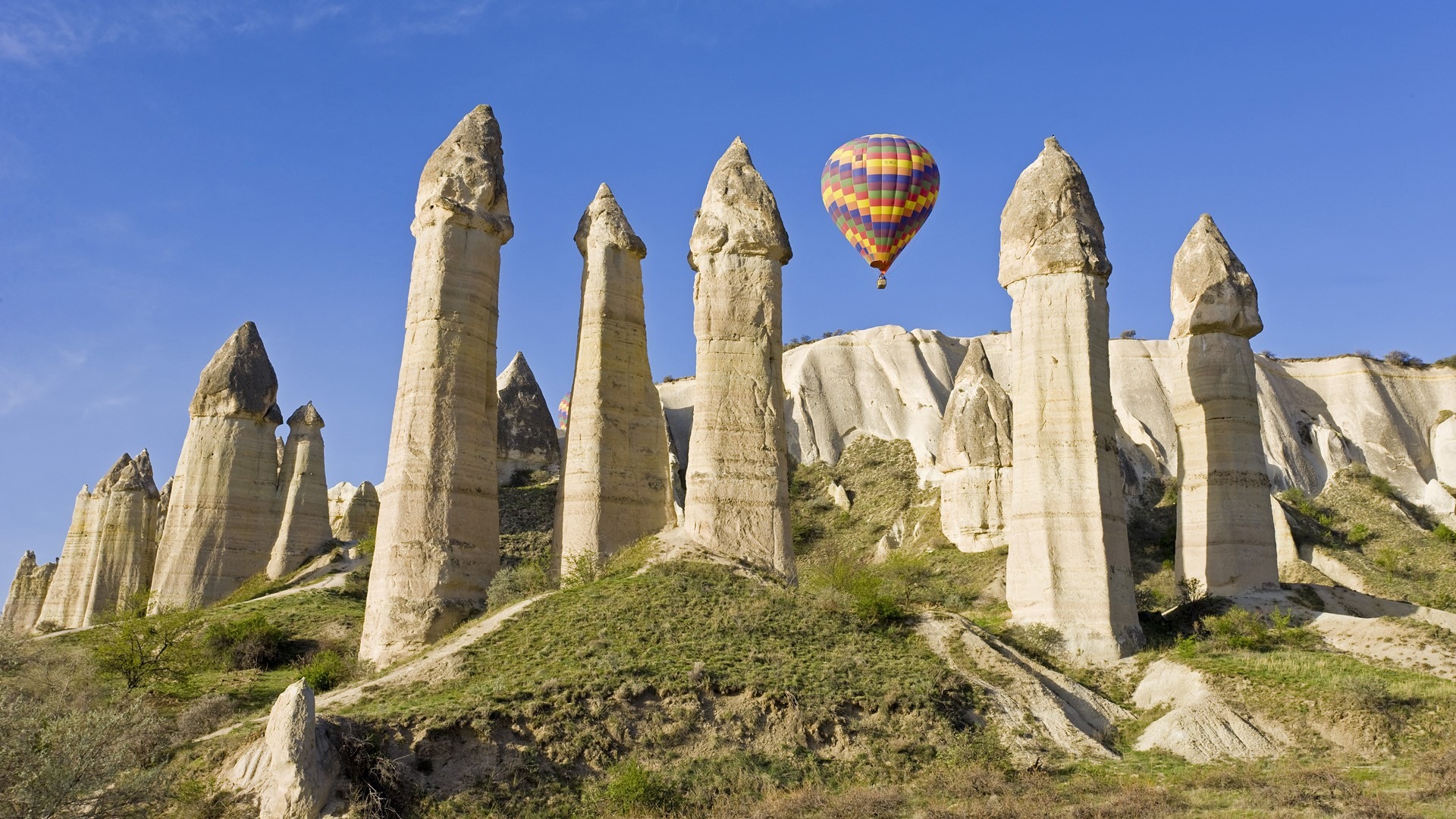
The unique geography of Cappadocia is a landform formed as a result of the eruptions of calderas, which are active volcanic mechanisms that took place ten million years ago. Basically, lava from volcanoes forms a 100-150 meter thick tuff (stone made up of lava and ash) layer on plateaus, lakes and streams. The plateau intensity, shaped by the eruptions from the main volcanoes, is constantly changing with the eruption of smaller volcanoes. With the erosion of this tuff layer, especially by Kızılırmak River, streams, lakes and wind, it has become the iconic fairy chimneys of today. Since flood waters find their way on steep slopes and cause the hard rocks to crack and break, the slope regressed with the deep carving of the more easily eroded material in the lower parts, thus conical shaped bodies protected from erosion by the hat on the upper parts emerged. The most distinctive examples of the fairy chimneys, especially around Paşabağı. Because the fairy chimneys in this region; conical, capped, mushroom-shaped, columnar and pointed rock. There is also a rock block made of hard rocks such as ignimbrite on the tops of the conical bodies of Paşabağı fairy chimneys consisting of tuff, tuffite and volcanic ash. Whether the fairy chimneys are short or long-lived depends on the resistance of the rock in this hat. The reason for the color fluctuations on some slopes was the temperature difference in the lava layer.
